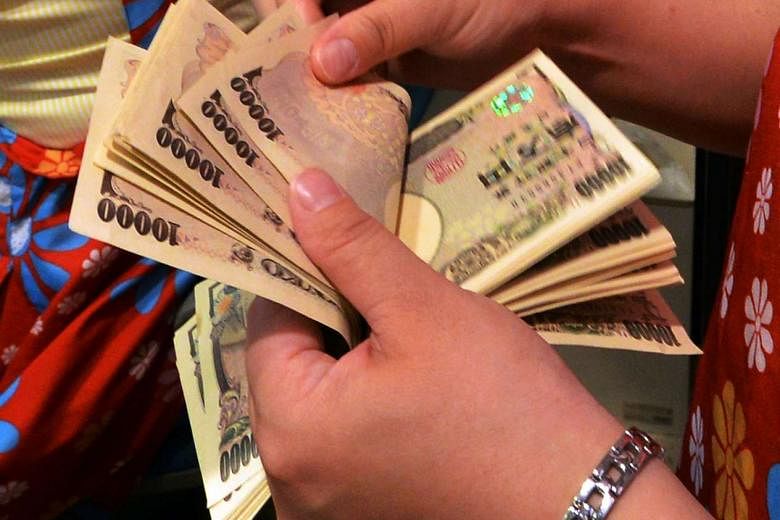SYDNEY (REUTERS) - The yen surged to an 18-month peak on Friday (April 29) as investors wagered the Bank of Japan might be done adding fresh stimulus to the economy, hurting prospects for Japanese exporters with a move that rippled through share markets across the Asian region.
Perhaps taking advantage of Japan's absence for a holiday, speculators smashed through the yen's previous top at 107.63 per US dollar and drove the currency as far as 107.075.
It had been at 111.67 before Thursday's decision by the BOJ not to ease policy further, even though prior media reports had set the market up for more action.
The euro likewise dropped to 121.94 yen, but had not quite breached its 2016 trough around 121.71.
The sheer speed of the move stirred speculation the Japanese authorities might intervene to restrain the yen. Officials on Thursday warned markets that they would be on guard even over the holidays.
Some, however, seemed unconvinced. "The steady hand on Thursday is consistent with the yen being some way down the BoJ's list of priorities," noted Sean Callow, a senior currency analyst at Westpac. "With the looming G7 meeting reinforcing the low risk of FX intervention, markets are likely to keep pressing their luck, with no obvious barrier to a test of 105."
The renewed rise in the yen has badly bruised exporters and left the Nikkei down 5 per cent for the week on Thursday. While the cash market was shut on Friday, Nikkei futures on the CME were down another 1 per cent at 16,165.
Markets across the region suffered in sympathy and MSCI's broadest index of Asia-Pacific shares outside Japan lost 0.5 per cent.
South Korean stocks slipped 0.8 per cent and Taiwan lost 1.3 per cent.
On Wall Street, shares took a late spill after Apple shed 3 per cent when billionaire investor Carl Icahn said he no longer has a position in the tech giant.
Amazon sweetened the mood a little after the close by blowing away earnings expectations for its first quarter, sending the stock up almost 13 per cent.
The Dow ended Thursday down 1.17 per cent, while the S&P 500 lost 0.92 per cent and the Nasdaq 1.19 per cent. European shares had started weaker but steadied toward their close.
Not helping sentiment was news the US economy braked hard in the first quarter to its slowest pace in two years as consumer spending softened and a strong dollar undercut exports.
Gross domestic product increased at a 0.5 per cent annual rate, the weakest since early 2014.
Yet jobless claims fell again and analysts remain optimistic that payrolls data out next week will show another solid gain.
The reversal in the US dollar proved a boon for most commodities with oil reaching 2016 highs for a third straight session. Brent has climbed nearly 80 per cent since hitting 12-year lows of around US$27 a barrel in late January.
Modest profit-taking set in on Friday, with Brent crude off 25 cents to US$47.89 a barrel. US crude lost 19 cents to US$45.84.
The two benchmarks are still up about 20 per cent in April and on track for their largest monthly gain in a year.

